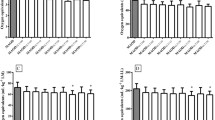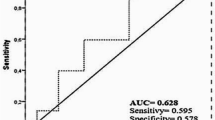Abstract
The goal of this study was to describe and validate a muscle specific method to evaluate the anaerobic threshold in a working muscle based on the simultaneous measurement of EMG activity and the deoxyhemoglobin content (ATHHb-EMG). The study involved males with different fitness levels. During the cycling (n = 40) and ski double poling (n = 9) incremental ramp tests, blood lactate concentration, and muscle deoxyhemoglobin content and EMG activity were measured. Some participants were involved in the cycling test-retest study (n = 11). In cycling and double poling tests, close and significant correlations (r = 0.89 – 0.92, P < 0.002) were found between lactate threshold (a marker of the anaerobic threshold at the organism level) and the ATHHb-EMG (a marker of the AT at the working muscle level). The coefficient of variation of the ATHHb-EMG in the cycling test-retest was low (~3%). The muscle specific ATHHb-EMG demonstrates low variability and is appropriate to detect the fitness level and training-induced increase in aerobic performance in a working muscle. The emergence on the market of miniature EMG amplifiers and near-infrared spectrometers opens wide possibilities for using our method in laboratory studies and in field tests.


Similar content being viewed by others
REFERENCES
Farrell, P.A., Wilmore, J.H., Coyle, E.F., et al., Plasma lactate accumulation and distance running performance, Med. Sci. Sports, 1979, vol. 11, no. 4, p. 338.
Komi, P.V., Ito, A., Sjodin, B., et al., Muscle metabolism, lactate breaking point, and biomechanical features of endurance running, Int. J. Sports Med., 1981, vol. 2, no. 3, p. 148.
Loat, C.E. and Rhodes, E.C., Relationship between the lactate and ventilatory thresholds during prolonged exercise, Sports Med., 1993, vol. 15, no. 2, p. 104.
Mader, A., Evaluation of the endurance performance of marathon runners and theoretical analysis of test results, J. Sports Med. Phys. Fitness 1991, vol. 31, no. 1, p. 1.
Faude, O., Kindermann, W., and Meyer, T., Lactate threshold concepts: how valid are they? Sports Med., 2009, vol. 39, no. 6, p. 469.
Beaver, W.L., Wasserman, K., and Whipp, B.J., A new method for detecting anaerobic threshold by gas exchange, J. Appl. Physiol., 1986, vol. 60, no. 6, p. 2020.
Beaver, W.L., Wasserman, K., and Whipp, B.J., Improved detection of lactate threshold during exercise using a log-log transformation, J. Appl. Physiol., 1985, vol. 59, no. 6, p. 1936.
Wasserman, K. and McIlroy, M.B., Detecting the threshold of anaerobic metabolism in cardiac patients during exercise, Am. J. Cardiol., 1964, vol. 14, p. 844.
Gollnick, P.D., Piehl, K., and Saltin, B., Selective glycogen depletion pattern in human muscle fibers after exercise of varying intensity and at varying pedalling rates, J. Physiol., 1974, vol. 241, no. 1, p. 45.
Marsh, G.D., Paterson, D.H., Thompson, R.T., and Driedger, A.A., Coincident thresholds in intracellular phosphorylation potential and pH during progressive exercise, J. Appl. Physiol., 1991, vol. 71, no. 3, p. 1076.
Zanconato, S., Buchthal, S., Barstow, T.J., and Cooper, D.M., 31P-magnetic resonance spectroscopy of leg muscle metabolism during exercise in children and adults, J. Appl. Physiol., 1993, vol. 74, no. 5, p. 2214.
Viitasalo, J.T., Luhtanen, P., Rahkila, P., and Rusko, H., Electromyographic activity related to aerobic and anaerobic threshold in ergometer bicycling, Acta Physiol. Scand., 1985, vol. 124, no. 2, p. 287.
Nagata, A., Muro, M., Moritani, T., and Yoshida, T., Anaerobic threshold determination by blood lactate and myoelectric signals, Jpn. J. Physiol., 1981, vol. 31, no. 4, p. 585.
Moritani, T., Takaishi, T., and Matsumoto, T., Determination of maximal power output at neuromuscular fatigue threshold, J. Appl. Physiol., 1993, vol. 74, no. 4, p. 1729.
Grassi, B., Quaresima, V., Marconi, C., et al., Blood lactate accumulation and muscle deoxygenation during incremental exercise, J. Appl. Physiol., 1999, vol. 87, no. 1, p. 348.
Taylor, A.D. and Bronks, R., Reproducibility and validity of the quadriceps muscle integrated electromyogram threshold during incremental cycle ergometry, Eur. J. Appl. Physiol. Occup. Physiol., 1995, vol. 70, no. 3, p. 252.
Hug, F., Laplaud, D., Lucia, A., and Grelot, L., EMG threshold determination in eight lower limb muscles during cycling exercise: a pilot study, Int. J. Sports Med., 2006, vol. 27, no. 6, p. 456.
Lucia, A., Sanchez, O., Carvajal, A., and Chicharro, J.L., Analysis of the aerobic-anaerobic transition in elite cyclists during incremental exercise with the use of electromyography, Br. J. Sports Med., 1999, vol. 33, no. 3, p. 178.
Pavlat, D.J., Housh, T.J., Johnson, G.O., et al., An examination of the electromyographic fatigue threshold test, Eur. J. Appl. Physiol Occup. Physiol., 1993, vol. 67, no. 4, p. 305.
Mahmutovic, S., Sprout, E.Y., Fontaine, J.C., et al., Test-retest reliability of the electromyographic fatigue threshold for cycle ergometry, Muscle Nerve, 2016, vol. 53, no. 5, p. 803.
Hopkins, W.G., Schabort, E.J., and Hawley, J.A., Reliability of power in physical performance tests, Sports Med., 2001, vol. 31, no. 3, p. 211.
Bhambhani, Y.N., Buckley, S.M., and Susaki, T., Detection of ventilatory threshold using near infrared spectroscopy in men and women, Med. Sci. Sports Exercise, 1997, vol. 29, no. 3, p. 402.
Belardinelli, R., Barstow, T.J., Porszasz, J., and Wasserman, K., Changes in skeletal muscle oxygenation during incremental exercise measured with near infrared spectroscopy, Eur. J. Appl. Physiol. Occup. Physiol., 1995, vol. 70, no. 6, p. 487.
Soller, B.R., Yang, Y., Lee, S.M., et al., Noninvasive determination of exercise-induced hydrodgen ion threshold through direct optical measurement, J. Appl. Physiol., 2008, vol. 104, no. 3, p. 837.
Bellotti, C., Calabria, E., Capelli, C., and Pogliaghi, S., Determination of maximal lactate steady state in healthy adults: can NIRS help? Med. Sci. Sports Exercise, 2013, vol. 45, no. 6, p. 1208.
Osawa, T., Kime, R., Hamaoka, T., et al., Attenuation of muscle deoxygenation precedes EMG threshold in normoxia and hypoxia, Med. Sci. Sports Exercise, 2011, vol. 43, no. 8, p. 1406.
Fontana, F.Y., Keir, D.A., Bellotti, C., et al., Determination of respiratory point compensation in healthy adults: Can non-invasive near-infrared spectroscopy help? J. Sci. Med. Sport, 2015, vol. 18, no. 5, p. 590.
Keir, D.A., Fontana, F.Y., Robertson, T.C., et al., Exercise intensity thresholds: identifying the boundaries of sustainable performance, Med. Sci. Sports Exercise, 2015, vol. 47, no. 9, p. 1932.
Wang, L., Yoshikawa, T., Hara, T., et al., Which common NIRS variable reflects muscle estimated lactate threshold most closely? Appl. Physiol. Nutr. Metab., 2006, vol. 31, no. 5, p. 612.
Kuznetsov, S.Yu., Popov, D.V., Borovik, A.S., and Vinogradova, O.L., Determination of aerobic–anaerobic transition in the working muscle using EMG and near-infrared spectroscopy data, Hum. Physiol., 2015, vol. 41, no. 5, p. 548.
Jones, R.H. and Molitoris, B.A., A statistical method for determining the breakpoint of two lines, Anal. Biochem., 1984, vol. 141, no. 1, p. 287.
Grassi, B. and Quaresima, V., Near-infrared spectroscopy and skeletal muscle oxidative function in vivo in health and disease: a review from an exercise physiology perspective, J. Biomed. Opt., 2016, vol. 21, no. 9, p. 091313.
Jensen, K. and Johansen, L., Reproducibility and validity of physiological parameters measured in cyclists riding on racing bikes placed on a stationary magnetic brake, Scand. J. Med. Sci. Sports, 1998, vol. 8, no. 1, p. 1.
Pfitzinger, P. and Freedson, P.S., The reliability of lactate measurements during exercise, Int. J. Sports Med., 1998, vol. 19, no. 5, p. 349.
Hoefelmann, C.P., Diefenthaeler, F., Costa, V.P., et al., Test-retest reliability of second lactate turnpoint using two different criteria in competitive cyclists, Eur. J. Sport Sci., 2015, vol. 15, no. 4, p. 265.
Homma, S., Fukunaga, T., and Kagaya, A., Influence of adipose tissue thickness on near infrared spectroscopic signals in the measurement of human muscle, J. Biomed. Opt., 1996, vol. 1, p. 418.
Ferreira, L.F., Hueber, D.M., and Barstow, T.J., Effects of assuming constant optical scattering on measurements of muscle oxygenation by near-infrared spectroscopy during exercise, J. Appl. Physiol., 2007, vol. 102, no. 1, p. 358.
ACKNOWLEDGMENTS
The study was performed according to the Plan for Fundamental Research of the SRC RF Institute of Biomedical Problems RAS and was funded by RFBR according to the research project no. 17-00-00308 (17-00-00242).
Author information
Authors and Affiliations
Corresponding author
Ethics declarations
Conflict of interests. The authors declare that they have no conflict of interest.
Statement of compliance with standards of research involving humans as subjects. The study was approved by the Human Ethics Committee of the Institute of Biomedical Problems and complied with the guidelines set forth in the Declaration of Helsinki (World Medical Association). All participants gave their written consent to participate in this study.
Additional information
The article was translated by the authors.
Rights and permissions
About this article
Cite this article
Popov, D.V., Kuznetsov, S.Y., Orlova, E.A. et al. Validity of a Muscle Specific Method to Evaluate the Anaerobic Threshold in Exercised Muscles. Hum Physiol 45, 174–179 (2019). https://doi.org/10.1134/S0362119719020087
Received:
Revised:
Accepted:
Published:
Issue Date:
DOI: https://doi.org/10.1134/S0362119719020087




